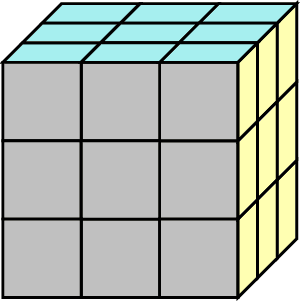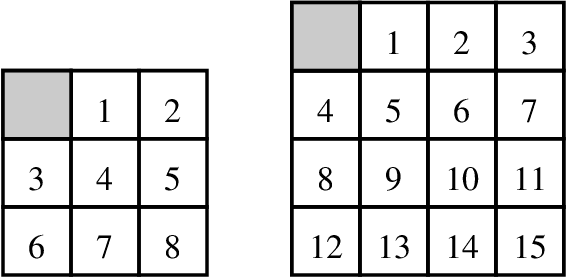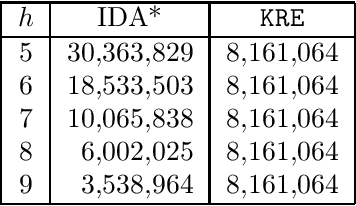Uzi Zahavi
Predicting the Performance of IDA* using Conditional Distributions
Jan 15, 2014



Abstract:Korf, Reid, and Edelkamp introduced a formula to predict the number of nodes IDA* will expand on a single iteration for a given consistent heuristic, and experimentally demonstrated that it could make very accurate predictions. In this paper we show that, in addition to requiring the heuristic to be consistent, their formulas predictions are accurate only at levels of the brute-force search tree where the heuristic values obey the unconditional distribution that they defined and then used in their formula. We then propose a new formula that works well without these requirements, i.e., it can make accurate predictions of IDA*s performance for inconsistent heuristics and if the heuristic values in any level do not obey the unconditional distribution. In order to achieve this we introduce the conditional distribution of heuristic values which is a generalization of their unconditional heuristic distribution. We also provide extensions of our formula that handle individual start states and the augmentation of IDA* with bidirectional pathmax (BPMX), a technique for propagating heuristic values when inconsistent heuristics are used. Experimental results demonstrate the accuracy of our new method and all its variations.
A General Theory of Additive State Space Abstractions
Oct 31, 2011



Abstract:Informally, a set of abstractions of a state space S is additive if the distance between any two states in S is always greater than or equal to the sum of the corresponding distances in the abstract spaces. The first known additive abstractions, called disjoint pattern databases, were experimentally demonstrated to produce state of the art performance on certain state spaces. However, previous applications were restricted to state spaces with special properties, which precludes disjoint pattern databases from being defined for several commonly used testbeds, such as Rubiks Cube, TopSpin and the Pancake puzzle. In this paper we give a general definition of additive abstractions that can be applied to any state space and prove that heuristics based on additive abstractions are consistent as well as admissible. We use this new definition to create additive abstractions for these testbeds and show experimentally that well chosen additive abstractions can reduce search time substantially for the (18,4)-TopSpin puzzle and by three orders of magnitude over state of the art methods for the 17-Pancake puzzle. We also derive a way of testing if the heuristic value returned by additive abstractions is provably too low and show that the use of this test can reduce search time for the 15-puzzle and TopSpin by roughly a factor of two.
 Add to Chrome
Add to Chrome Add to Firefox
Add to Firefox Add to Edge
Add to Edge